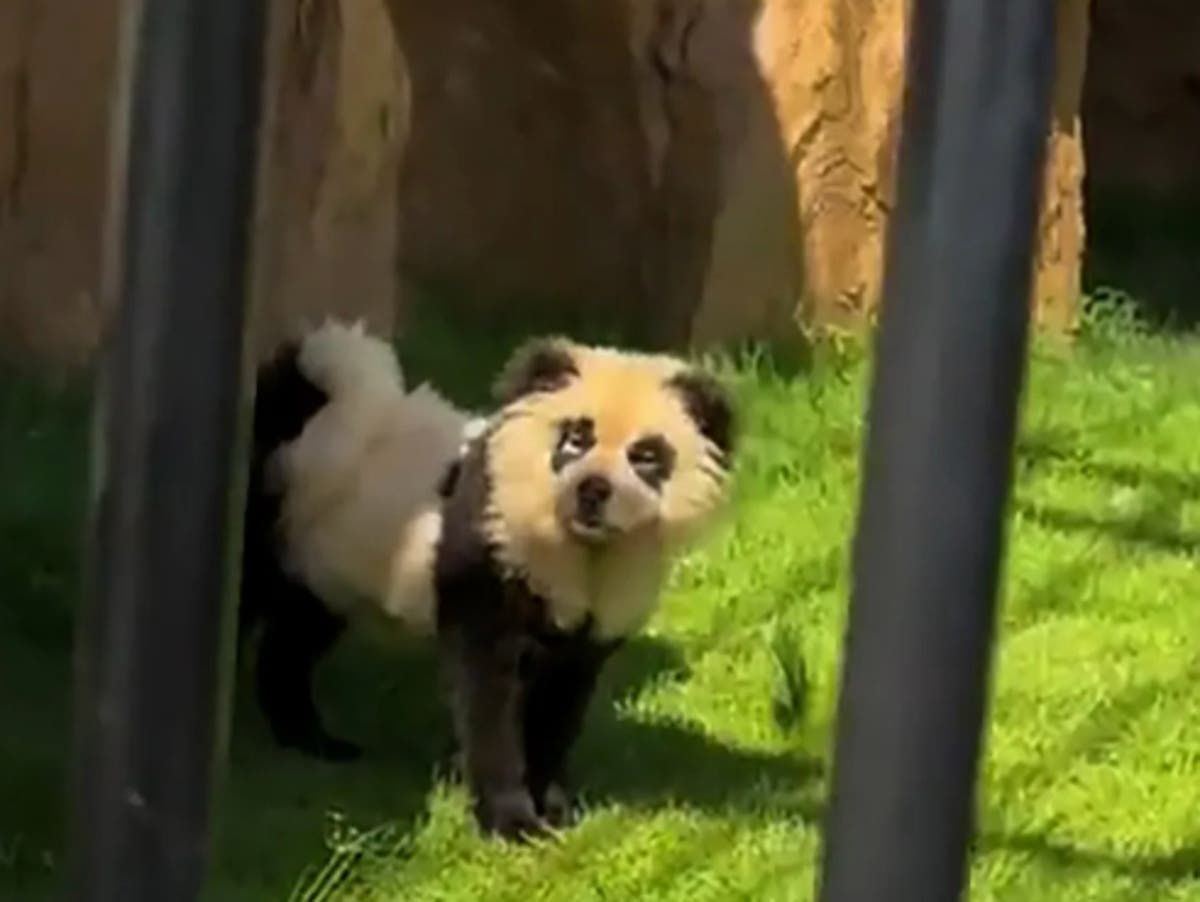Your support helps us tell the story.
My recent work focusing on Latino voters in Arizona has shown me how crucial independent journalism is to giving voice to underrepresented communities.
Your support is what allows us to tell these stories and draw attention to issues that are often overlooked. Without your contribution, these voices may not be heard.
Every dollar you donate helps us continue to shed light on these critical issues in the run-up to the election and beyond.
Eric Garcia
Washington Office Chief
A Chinese zoo has admitted that the pandas in its exhibits were, in fact, “painted dogs.”
According to the The New York PostVisitors to Shanwei Zoo realized they were being tricked when so-called pandas began panting and barking. Pandas are native to China and an international symbol of the country.
In one visitor's video, one of the “pandas” was visibly panting as it rested on a rock on a fence, while another clip showed a panda with a long tail strolling around.
“That's a PANdog,” one viewer wrote, while someone else joked: “That's the Temu version of a panda.”
“They were panting, that’s why they are pandas,” said a third.
After visitors made the stunt public on social media, organisers admitted they had painted two Chow Chows (a furry breed of dog native to northern China) with black and white panda markings. Visitors have since demanded their money back for misleading advertising.
This is not the first time a Chinese zoo has misled visitors by claiming to house real pandas.
In May, NBC News Taizhou Zoo in Jiangsu province was also reported to have painted Chow Chows. Zoo representatives initially claimed the animals were a rare breed of “panda dogs,” before admitting that such animals do not exist. At the time, zoo officials told Chinese state media that they had advertised them as “panda dogs” and did not intentionally mislead anyone.
When asked by reporters why they came up with the idea of “panda dogs” to cover their tracks, a zoo representative explained: “There are no panda bears at the zoo and as a result, we wanted to do this.”
At the time, state media and the general public also criticized the zoo for mistreating dogs.
“There is nothing funny about dyeing Chow Chow dogs to attract tourists,” wrote one user on social media platform Weibo, China’s equivalent of X, formerly Twitter. “Their fragile skin and naturally thick fur make them susceptible to skin diseases.”
However, officials defended their decision to paint the dogs, saying the dye did not harm them and arguing that if humans could do it, so could dogs.
“Normal people dye their hair,” a representative said. Qilu Evening News“Dogs can also dye their hair. It’s the same as hair.”
From a dog cafe in southwestern Sichuan province dyeing six Chow Chows to look like panda bears in 2019 to a woman in the same province walking a “panda dog” in a viral video in 2020, it doesn't appear that the zoo's practice is a fluke.












